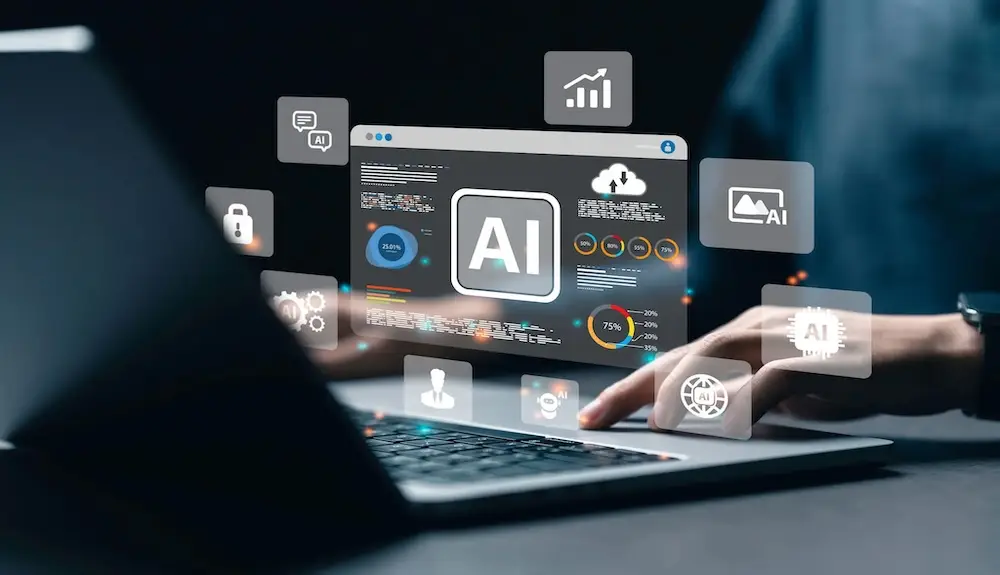I’ve spent years navigating technological shifts – from the dot-com boom to the generative AI revolution – and I’ve learned that anticipating trends isn’t just about prediction; it’s about preparation. The AI landscape in 2025 will be defined by breakthroughs that blur the line between human and machine capabilities, reshaping industries and redefining competitiveness. Below, I distill some of the most consequential AI trends poised to impact enterprises, backed by real-world applications and strategic insights.
1. AI Agents with Advanced Reasoning: The Rise of Autonomous Problem-Solvers
AI is evolving from tools that assist to agents that act. These systems leverage enhanced reasoning capabilities, such as OpenAI’s o1 model, which solves complex problems through logical, human-like steps. By the end of 2025, 60% of Fortune 500 companies will deploy AI agents for tasks like contract analysis, code generation, and multistep workflow automation.
Strategic Implications
- Precision in High-Stakes Fields: In healthcare, AI agents like Microsoft’s AI2BMD simulate biomolecular dynamics to accelerate drug discovery, reducing R&D timelines by 40%.
- Operational Efficiency: Delta Airlines has deployed AI agents to dynamically reschedule crews and rebook passengers during unexpected weather events, resulting in a 25% reduction in flight delays and a significant improvement in customer satisfaction..
Challenge: Over-reliance on autonomy risks ethical oversights. For example, unmonitored AI agents in legal contract review might overlook nuanced clauses, exposing firms to compliance risks.
2. Dual-Scale Model Innovation: Very Large vs. Very Small Models
The “bigger is better” mantra is giving way to strategic scaling. While frontier models like GPT-5 (50+ trillion parameters) tackle broad tasks, specialized small models (e.g., Microsoft’s Phi-4) excel in niche domains like medical imaging analysis.
Strategic Implications
- Cost Efficiency: Small models fine-tuned for specific use cases (e.g., fraud detection) reduce cloud costs by 50% compared to oversized general models.
- Edge Deployment: Compact models enable real-time AI on IoT devices. BMW’s factory robots now use on-device models to predict mechanical failures, avoiding $2M/month in downtime.
Case Study: A fintech firm replaced its monolithic AI with a mix of GPT-5 for customer service and a 3 billion-parameter model for transaction auditing, boosting accuracy by 35% while cutting inference costs.
3. AI-Driven Scientific Discovery: Solving Humanity’s Grand Challenges
AI is transitioning from a lab curiosity to a core scientific tool. In 2025, expect breakthroughs in sustainable materials, climate modeling, and personalized medicine. IBM’s generative AI now designs carbon-capture molecules 100x faster than traditional methods.
Strategic Implications
- Pharma Acceleration: Moderna uses AI to simulate mRNA interactions, shortening vaccine development cycles from years to months1.
- Climate Tech: Startups like Climeworks leverage AI to optimize direct air capture systems, improving CO2 sequestration efficiency by 70%.
Risk: Overhyped claims could divert resources from viable projects. Rigorous validation frameworks are critical.
4. Multimodal and Explainable AI: Trust Through Transparency
Models now process text, images, and audio in unison (e.g., Google’s Gemini 2.0), while explainability tools demystify AI decisions. By the end of 2025, approximately 80% of regulated industries will mandate AI transparency audits.
Strategic Implications
- Regulatory Compliance: Banks like JPMorgan Chase use explainable AI to trace loan approval decisions, satisfying FDIC requirements.
- Customer Experience: Retailers deploy multimodal AI (e.g., Nike’s AR shoe fitter) that blends voice and visual inputs, boosting conversion rates by 25%.
Challenge: Multimodal data fusion increases complexity. A European retailer’s AI misaligned inventory images with text descriptors, causing a $5 million stock error.
5. Custom Silicon and Cloud-Native AI: The Hardware Revolution
Generic GPUs can’t keep up with AI’s demands. Custom chips (e.g., Google’s TPU v6) and cloud-native architectures now dominate. AWS’s AI-optimized EC2 instances cut model training costs by 45%.
Strategic Implications
- Performance Gains: Meta’s Llama 3.3 runs 3x faster on custom silicon, enabling real-time content moderation.
- Scalability: Cloud platforms offer AI-as-a-Service, letting mid-sized firms access GPT-5-level tools without upfront investments.
Risk: Vendor lock-in looms. A manufacturing client faced 18-month delays switching from Azure AI to an on-prem solution due to proprietary dependencies.
AI Trends Table: Strategic Tradeoffs
| Trend | Opportunities | Risks | Adoption Tip |
| AI Agents | Autonomous workflow execution | Ethical/oversight gaps | Start with non-critical tasks (IT tickets) |
| Dual-Scale Models | Cost efficiency, edge deployment | Integration complexity | Audit workflows for specialization needs |
| Scientific AI | Breakthrough acceleration | Overhyped claims | Partner with academia for validation |
| Multimodal AI | Enhanced customer insights | Data misalignment errors | Implement cross-modal validation checks |
| Custom Silicon | Performance gains | Vendor lock-in | Negotiate portability clauses in contracts |
The Critical Question for Leaders
Can my organization’s AI initiatives pivot from cost-saving tools to revenue-generating differentiators within 12 months?
If your AI strategy includes modular architectures (mixing large and small models), explainability protocols, and cross-functional teams (e.g., data scientists + compliance officers), the answer is probably yes. If not:
- Pilot an AI agent in a controlled environment (e.g., HR onboarding).
- Invest in upskilling 20% of IT staff on multimodal AI and custom silicon.
- Form industry consortia to co-develop ethical AI frameworks, mitigating regulatory surprises.
Final Thought
The enterprises that thrive in 2025 won’t just adopt AI — they’ll adapt it to turn disruption into advantage. The time to act is now.




